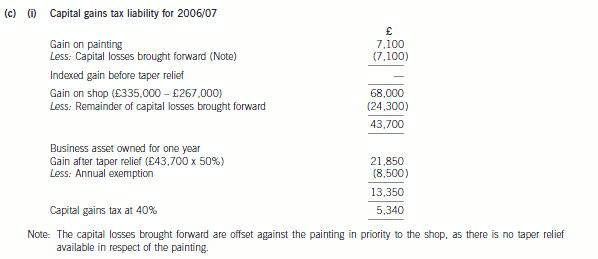西藏2020年ACCA国际会计师报考指南——新手报考必看
发布时间:2020-01-09
2020年伊始,相信各位“资深”ACCAer们都知道ACCA国际注册会计师考试是有免试政策的,你了解到自己能免试几个科目吗?51题库考试学习网再次温馨提示一下:这里免试是指的可以不用考试,但免试考试科目的考试费还是要缴的哟~
知道自己能免试几科的ACCAer们虽然可以相对轻松一些,但仍然不可放松警惕、抓紧时间复习才是王道。当然,51题库考试学习网在这里为大家提供了一套关于报考考试科目顺序的宝典(也有除去免试科目的哟),建议各位ACCAer们收藏分享哦~
首先大家先看看最新的免试政策,看看你符合哪个条件,到底能免试几个科目:
一、ACCA对中国教育部认可的全日制大学在读生(会计或金融专业)设置的免试政策:
1.会计学或金融学(完成第一学年课程):可以注册为ACCA正式学员,无免试,仅有报名参加ACCA考试资格。
2.会计学或金融学(完成第二学年课程):也就是完成大二学业,可以免试3门课程(AB-FA)
3.会计学或金融学(完成第三学年课程):完成大三学业,免试5门课程(AB-PM)
4.其他专业(在校生完成大一后):非会计或者金融专业的,完成大一学业之后,即可注册但无免试
二、ACCA对中国教育部认可高校毕业生设置的免试政策:
1.会计学(获得学士学位):本科毕业会计专业的,免试5门课程(AB-PM)
2.会计学(辅修专业):指的是大学第二选修专业为会计的,免试3门课程(AB-FA)
3.金融专业:本科毕业金融专业的,免试5门课程(AB-PM)
4.法律专业:完成本科法律学习获得学位证的,免试1门课程(LW)
5.商务及管理专业:完成商务专业学习或管理专业学习的,免试1门课程(AB)
6.MPAcc专业(获得MPAcc学位或完成MPAcc大纲规定的所有课程、只有论文待完成但需要出具相关证明哟):原则上免试九门课程(AB-FM),其中F6(税务)的免试条件:CICPA全科通过或MPAcc课程中选修了“中国税制”课程。
7.MBA学位(获得MBA学位):免试3门课程(AB-FA)
8.非相关专业:非以上说描述的专业,则无免试
三、注册会计师考生:
1.2009年CICPA“6+1”新制度实行之前获得CICPA全科通过的人员:免试5门课程(AB-LW和TX)
2.2009年CICPA“6+1”新制度实行之后获得CICPA全科通过的人员:免试9们课程(AB-FM)
3.如果在学习ACCA基础阶段科目的过程中获得了CICPA全科合格证(须2009年“6+1”制度实行后的新版证书),可以自行决定是否申请追加免试。
四、其他
1.CMA(美国注册管理会计师)全科通过并取得证书:免试AB-FA
2.USCPA(美国注册会计师)全科通过:免试AB-TX、AA、FM(共免8门)
看完以上最新免试条件,相信各位ACCAer们清楚自己是否有免试的资格和免试几个科目了,那么接下来就是大家十分期待的:如何合理搭配考试科目,才能最大化的通过考试?
ACCA考试科目共15科,分为四个大模块:知识模块(ACCA考试科目AB-FA)、技能模块(ACCA考试科目LW-FM)、核心模块(ACCA考试科目SBL&SBR)、选修模块(ACCA考试科目AFM-AAA)。学员只需要通过11门必修科目及2门选修科目共13门课程即可通过考试,获得ACCA证书。
不过,总体来说,ACCA考试科目有两个部分:基础阶段和专业阶段。主要的学习内容是哪些呢?它们各自有哪些特点呢?
第一部分为基础阶段,主要分为知识课程和技能课程两个部分。知识课程主要涉及财务会计和管理会计方面的核心知识,也为接下去进行技能阶段的详细学习搭建了一个平台。技能课程共有六门课程,广泛的涵盖了一名会计师所涉及的知识领域及必须掌握的技能。这一部分是对学员基础知识的考核和巩固,在ACCA考试中也只有通过了基础阶段的部分才可以报考专业阶段的部分,这个顺序是固定的不能变的。
第二部分为专业阶段,主要分为核心课程和选修(四选二)课程。该阶段的课程相当于硕士阶段的课程难度,是对第一部分课程的引申和发展。因此对各位考生的要求将会更加的严格,该阶段课程引入了作为未来的高级会计师所必须的更高级的职业技能和知识技能。选修课程为从事高级管理咨询或顾问职业的学员,设计了解决更高级和更复杂的问题的技能。因此这一部分必须要求考试基础十分牢固,并且理解能力和学习能力都要更上一层楼才可以。
51题库考试学习网先大致将考生的情况分成三种:无免考、免考1~2科、免考超过3科,免考的科目数目的不同,考试科目的搭配建议有所不同。
1、无免考情况考试科目搭配
51题库考试学习网建议各位考生从相对简单的科目入手,层层深入,让自己慢慢适应考试难度。所以还是从最基本的科目F1、F2、F3开始考,F1、F2、F3相对较简单,如果不想一次考三科,可以按F1-F3-F2这个顺序来报考。这三科为机考形式,有70%的选择题,所以在ACCA的入门阶段还是相对较简单的,通过率相对于后面的科目还是高很多的,中国考生的通过率也普遍较高。
F6、F7、F9,这些科目计算偏多,考试时笔试语言相对其他科目较少,接受起来相对容易;而F4、F5、F8属于文字较多的科目,对于写作能力要求相对强一些。因此计算能力强或者说对数字敏感的考生可以报考F6、F7、F9,而擅长写作和语言能力的考试就先报考F4、F5、F8。注意哦,这里不建议一次性报考所以计算科目或者语言文字类的科目,建议将这两类考试分开报,擅长哪一类就多报一科即可。
2、免考1-2科情况考试科目搭配
对于英语能力稍强的同学,建议还是按科目本身的顺序来报考。如果是第一次考的话,报考最多不要超过2科,压力可能会有点大,防止后期学习时间无法保证,可能会导致需要放弃某科考试而浪费金钱和时间的后果,得不偿失。因此,建议考生要根据自己的实际能力来报考考试,因为毕竟考试的有效期是7年,时间还算长,不用担心通过的考试成绩过期无效。
3、免考超过3科情况考试科目搭配
如果是英语能力稍弱的同学,建议可以从计算偏多的科目开始报考,比如F6、F7、F9,这些科目计算多于论述,因此备考起来相对容易;相对地,F4、F5、F8属于需要写的比较多的科目,对于英语的文字能力要求相对强一些。当然,这些只是建议,学员也可以根据自身的具体情况来决定报考科目,学会搭配科目可以大大地促进学习效率。51题库考试学习网建议大家科学地备考,善于发现科目与科目之间存在的相似性,或许一个知识点可以反复在不同考试科目中利用也说不定哦~
此外,根据网上对1000名ACCA自学考生的调查发现:2门科目最佳搭配组合是:F7/F8、F4/F5、F8/F9、F4/F6、F5/F9、F6/F7。以此类推,当然这具体需要按照自己对各科目的知识点熟悉程度综合而定。
科目搭配报考是门学问,考生根据具体情况,按照自身对项目知识点的熟悉程度进行合理的科目搭配,第一次的话每次报考两门课程,不要超过三门,以免后期学习时间无法保证,导致需要放弃某科考试而浪费金钱和时间。
以上就是关于ACCA考试报考科目顺序的一些建议,总而言之,大家还是需要根据自己实际的学习情况来报考,毕竟这些技巧是死的,人是活的,只有适合自己的才是最科学的方法,最后祝大家考试顺利通过~
下面小编为大家准备了 ACCA考试 的相关考题,供大家学习参考。
(c) (i) Compute Gloria’s capital gains tax liability for 2006/07 ignoring any claims or elections available to
reduce the liability. (3 marks)

(c) Identify and discuss the ethical and professional matters raised at the inventory count of LA Shots Co.
(6 marks)
(c) There are several ethical and professional issues raised in relation to the inventory count of LA Shots Co.
Firstly, it was inappropriate of Brenda Mangle to offer the incentive to the audit juniors. As she is a new manager, it may be
that she didn’t realise how the incentive would be perceived. Brenda should be informed that her actions could have serious
implications.
The offer could be viewed as a bribe of the audit juniors, and could be perceived as a self-interest independence threat as
there is a financial benefit offered to members of the audit team.
The value of the ten bottles of ‘Super Juice’ should be considered, as it is only appropriate for a member of the audit team to
accept any goods or hospitality from the audit client if the value is ‘clearly insignificant’. Ultimately it would be the decision
of the audit partner as to whether the value is clearly insignificant. It is likely that this does not constitute a significant threat
to independence, however the offer should still be referred to the audit partner.
Also, if the juniors took ten bottles of ‘Super Juice’, this could interfere with the physical count of goods and/or with cut off
details obtained at the count. The juniors should therefore have declined the offer and informed a senior member of the audit
team of the situation.
There may be a need to adequately train new members of staff on ethical matters if the juniors were unsure of how to react
to the offer.
The work performed by the juniors at the inventory count must be reviewed. The audit procedures were performed very
quickly compared to last year and therefore sufficient evidence may not have been gathered. In an extreme situation the whole
inventory count may have to be reperformed if it is found that the procedures performed cannot be relied upon.
In addition, the juniors should not have attended the audit client’s office party without the permission of the audit manager.
The party appears to have taken place during work time, when the juniors should have been completing the inventory count
procedures. The two juniors have not acted with due professional consideration, and could be considered to lack integrity.
The actions of the juniors should be discussed with them, possibly with a view to disciplinary action.
There may also be questions over whether the direction and supervision of the juniors was adequate. As the two juniors are
both recent recruits, this is likely to be the first inventory count that they have attended. It appears that they may not have
been adequately briefed as to the importance of the inventory count as a source of audit evidence, or that they have
disregarded any such briefing that was provided to them. In either case possibly a more senior auditor should have
accompanied them to the inventory count and supervised their actions.
(ii) Using the previous overhead allocation basis (as per note 4), calculate the budgeted profit/(loss)
attributable to each type of service for the year ending 31 December 2006 and comment on the results
obtained using the previous and revised methods of overhead allocation. (5 marks)

声明:本文内容由互联网用户自发贡献自行上传,本网站不拥有所有权,未作人工编辑处理,也不承担相关法律责任。如果您发现有涉嫌版权的内容,欢迎发送邮件至:contact@51tk.com 进行举报,并提供相关证据,工作人员会在5个工作日内联系你,一经查实,本站将立刻删除涉嫌侵权内容。
- 2020-03-13
- 2020-04-08
- 2020-03-03
- 2020-03-11
- 2020-03-04
- 2020-01-09
- 2020-01-10
- 2020-01-10
- 2020-01-10
- 2020-01-09
- 2020-03-01
- 2020-03-11
- 2020-01-10
- 2020-03-08
- 2020-03-04
- 2020-01-02
- 2020-01-10
- 2020-02-28
- 2020-01-08
- 2020-03-27
- 2020-03-08
- 2020-03-15
- 2020-03-10
- 2020-05-20
- 2020-03-13
- 2020-04-28
- 2019-12-30
- 2020-01-08
- 2020-01-10
- 2020-05-08